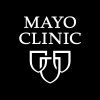
TCDαβ/CD45RA Haploidentical Transplantation in Children With Leukemia
Relapsed Pediatric ALLAcute Graft-Versus-Host Disease (Gvhd) Grade IV (Diagnosis)1 moreThis is a multi-center clinical study in China using CliniMACS TCRα/β+ and CD45RA+ T cell depleted stem cell grafts from haploidentical donors for hematopoietic stem cell transplantation in children.

CAR-20/19-T Cells in Patients With Relapsed/Refractory B Cell ALL
Acute Lymphoblastic Leukemiain Relapse6 moreThis phase 1 study will evaluate the safety and efficacy of a CAR-T cell therapy directed against two B cell antigens (CD19 CD20) and produced under good manufacturing practice (GMP) conditions using the closed system CliniMACS Prodigy device in B ALL.

CLAG-GO for Patients With Persistent, Relapsed or Refractory AML
Acute Myeloid LeukemiaAdult4 moreThis study involves evaluating a combination of chemotherapy drugs known as "CLAG-GO" [cladribine, cytarabine, granulocyte-colony stimulating factor (G-CSF) and gemtuzumab ozogamicin (GO)] in the treatment of acute myeloid leukemia (AML) that has not responded well to standard therapy or has returned after an initial remission (relapsed). The trial will be conducted at the University of Maryland Greenebaum Comprehensive Cancer Center (UMGCCC). Potential participants will go through a screening period to see if they are eligible to join the study. If eligible, participants will be hospitalized for 4-5 weeks to receive study treatment with CLAG-GO, called induction chemotherapy. If tests show that the cancer is in remission after induction chemotherapy, participants may undergo further chemotherapy (known as consolidation) or may proceed with bone marrow/stem cell transplantation. Patients who receive consolidation chemotherapy and remain in remission may have up to 8 cycles of outpatient maintenance therapy. A cycle lasts about 28 days. All participants will be monitored carefully for both side effects and to see if the study treatment is working. Lab tests and exams will be conducted throughout the entire study. In addition, special studies will be done at various time points to try to understand better how the drugs work and which patients are likely to respond best.

Acalabrutinib With or Without Obinutuzumab in Treating Patients With Early-Stage Chronic Lymphocytic...
Chronic Lymphocytic LeukemiaSmall Lymphocytic LymphomaThis phase II trials studies how well acalabrutinib with or without obinutuzumab works in treating patients with early-stage chronic lymphocytic leukemia or small lymphocytic lymphoma. Acalabrutinib may stop the growth of cancer cells by blocking some of the enzymes needed for cell growth. Immunotherapy with monoclonal antibodies, such as obinutuzumab, may help the body's immune system attack the cancer, and may interfere with the ability of tumor cells to grow and spread. It is not yet known whether giving acalabrutinib with or without obinutuzumab will work better in treating patients with early-stage chronic lymphocytic leukemia or small lymphocytic lymphoma.

Venetoclax and Vincristine Liposomal in Treating Patients With Relapsed or Refractory T-cell or...
B Acute Lymphoblastic LeukemiaLymphoblasts 5 Percent or More of Bone Marrow Nucleated Cells4 moreThis phase Ib/II clinical trial studies the side effects and best dose of venetoclax and how well it works when given together with vincristine liposomal in treating patients with T-cell or B-cell acute lymphoblastic leukemia that has come back or does not respond to treatment. Venetoclax may stop the growth of cancer cells by blocking some of the enzymes needed for cell growth. Drugs used in chemotherapy, such as vincristine liposomal, work in different ways to stop the growth of cancer cells, either by killing the cells, by stopping them from dividing, or by stopping them from spreading. Giving venetoclax together with vincristine liposomal may work better in treating patients with acute lymphoblastic leukemia.

Inotuzumab Ozogamicin and Conventional Chemotherapy In Patients Aged 56 Years and Older With ALL...
Precursor Cell Lymphoblastic LeukemiaThe trial proposed to evaluate the efficacy and safety of an inotuzumab ozogamicin followed by maintenance treatment in patients with acute lymphoblastic leukemia older than 56 years

Total Marrow and Lymphoid Irradiation Before Donor Transplant and Cyclophosphamide in Treating Patients...
Acute Myeloid LeukemiaThis pilot phase I trial studies the side effects of total bone marrow and lymphoid irradiation and how well it works with cyclophosphamide in treating patients with acute myeloid leukemia. Total marrow and lymphoid irradiation targets cancer in bone marrow and blood, instead of applying radiation to the whole body. Giving total bone marrow and lymphoid irradiation before a donor transplant helps stop the growth of cells in the bone marrow, including normal blood-forming cells (stem cells) and cancer cells. Drugs used in chemotherapy, such as cyclophosphamide, work in different ways to stop the growth of cancer cells, either by killing the cells, by stopping them from dividing, or by stopping them from spreading. Giving total bone marrow and lymphoid irradiation before donor transplant and cyclophosphamide after transplant may work better at treating acute myeloid leukemia.

TPM Regimen (Thalidomide, Prednisone and Methotrexate) in LGLL
T-LGL LeukemiaClpd-NkLarge granular lymphocytic leukemia (LGLL) is a lymphoproliferative disease, with LGL infiltration in peripheral blood and bone marrow, hepatosplenomegaly, and cytopenia. Both T-LGLL and CLPD-NK are indolent disease and share similar biology and clinical course, and treated under the same strategy. So the investigators put them together as LGLL. The investigators used TPM regimen (thalidomide + prednison + methotrexate ) to treat LGLL since 2013, and 18/20 patients (90%) obtained clinical response, including 80% complete response. Adverse events (AE) of grade 3 and above are rare and safe. Therefore, the investigators designed this multicenter clinical trial to validate the efficacy of the TPM regimen in symptomatic T-LGLL and CLPD-NK.

BXCL701 Phase 1 R/R Acute Myeloid Leukemia or Myelodysplastic Syndrome
Acute Myeloid LeukemiaMyelodysplastic Syndrome With Excess Blasts-2The goal of this research study is to find the safest and most effective dose of the study drug, BXCL701, for the treatment of Acute Myeloid Leukemia (AML) or Myelodysplastic Syndrome (MDS). The names of the study drugs involved in this study are/is: BXCL701

A Study of CAR-GPRC5D in Patients With Relapsed/Refractory Multiple Myeloma or Plasma Cell Leukemia...
Relapsed/Refractory Multiple MyelomaPlasma Cell LeukemiaThis study is a single-center, open, dose-escalation study to observe the safety and efficacy of different doses of CAR-GPRC5D in patients with R/R MM or Plasma Cell Leukemia.
